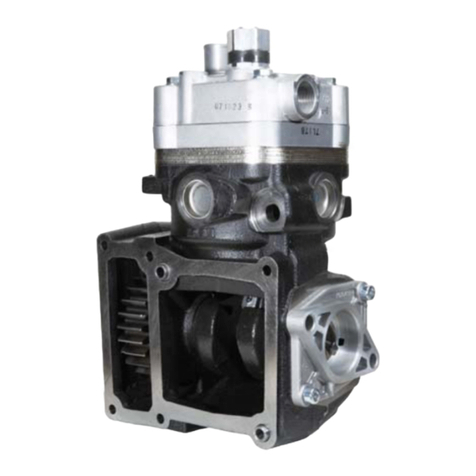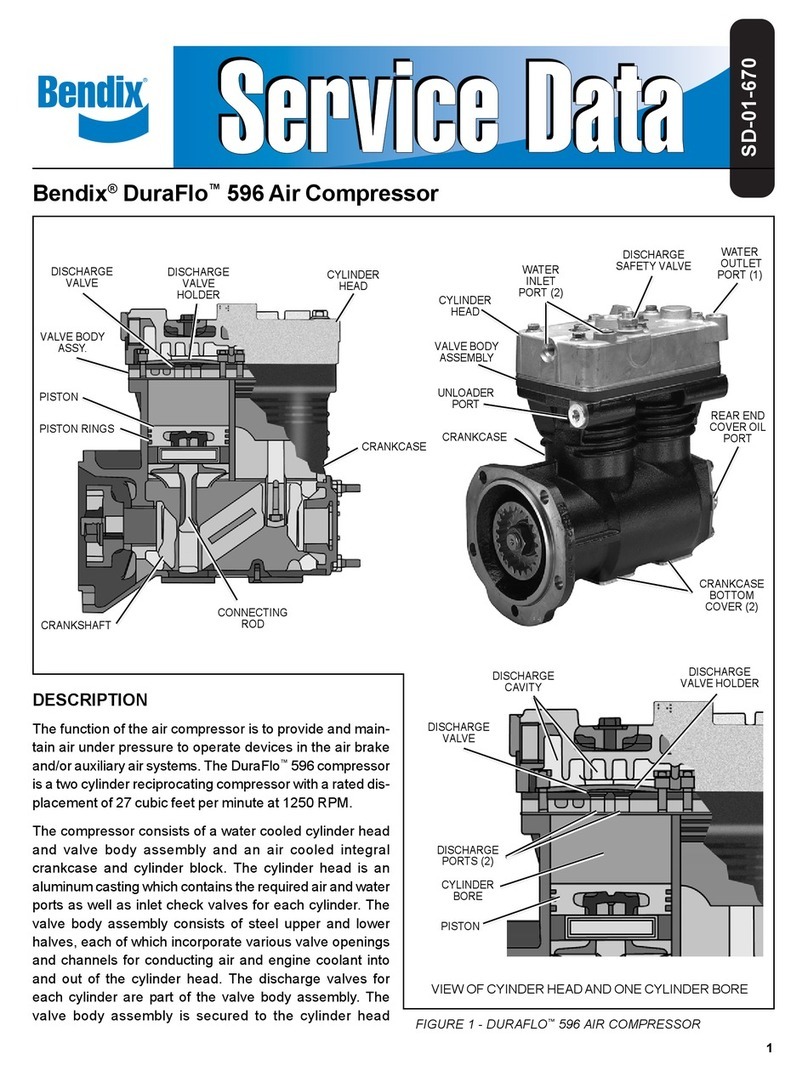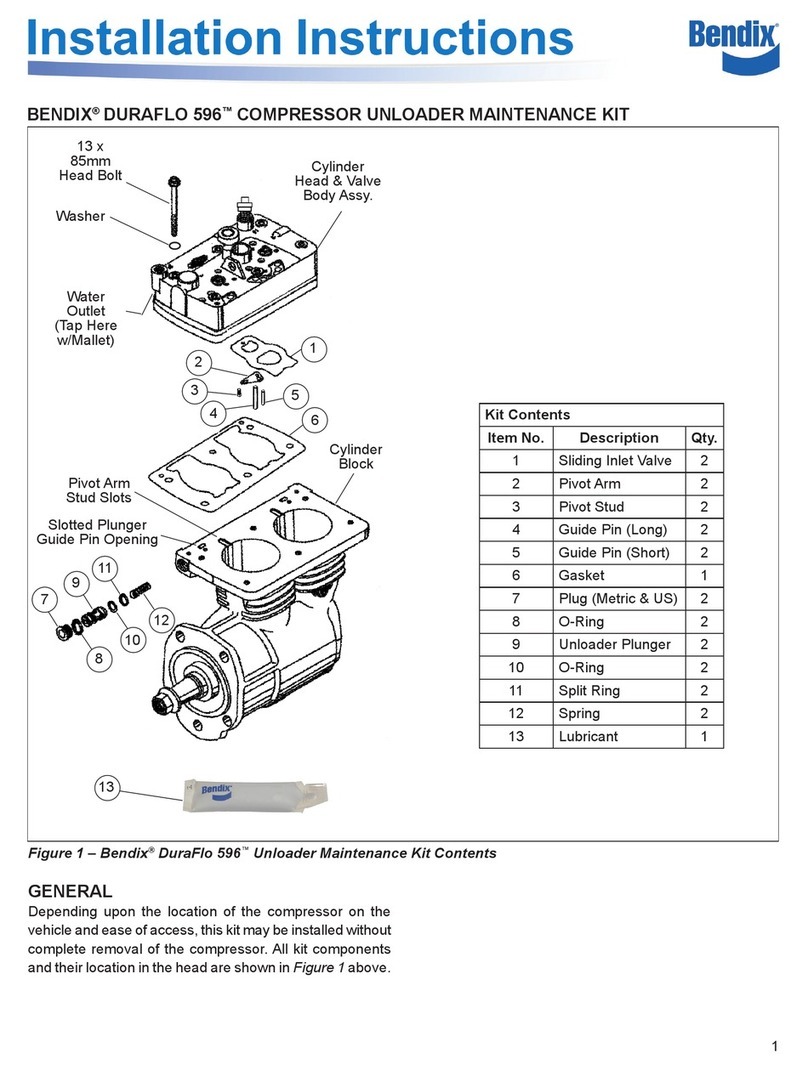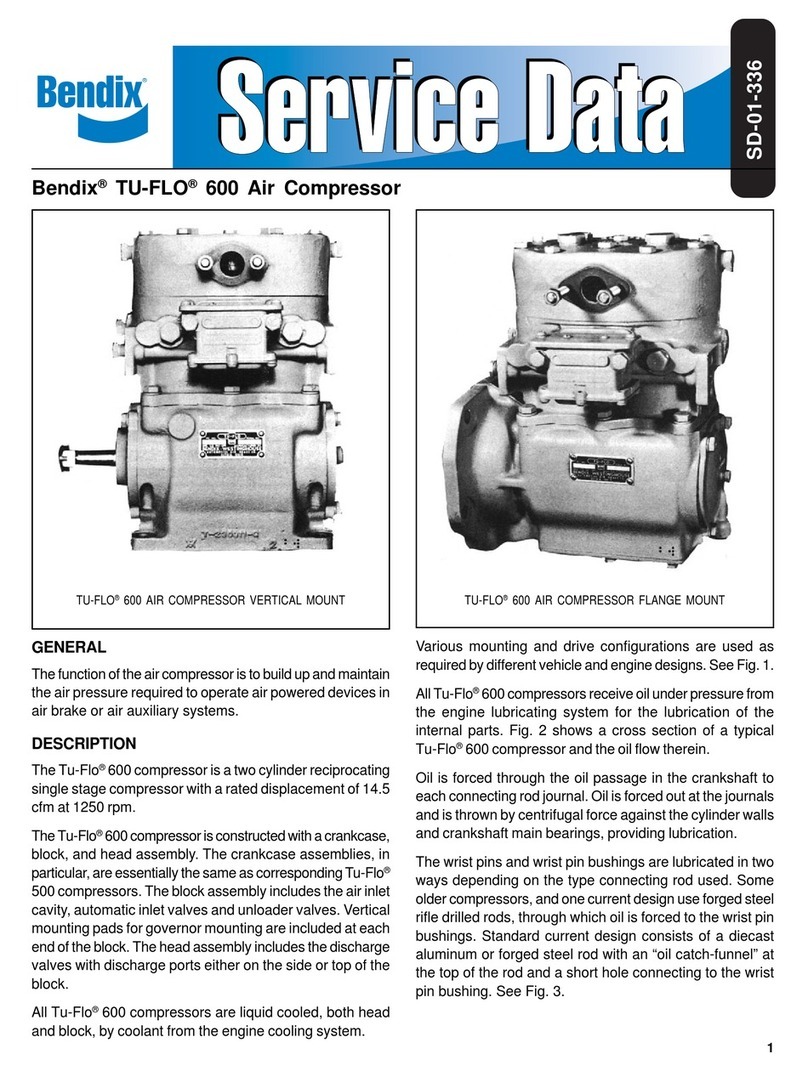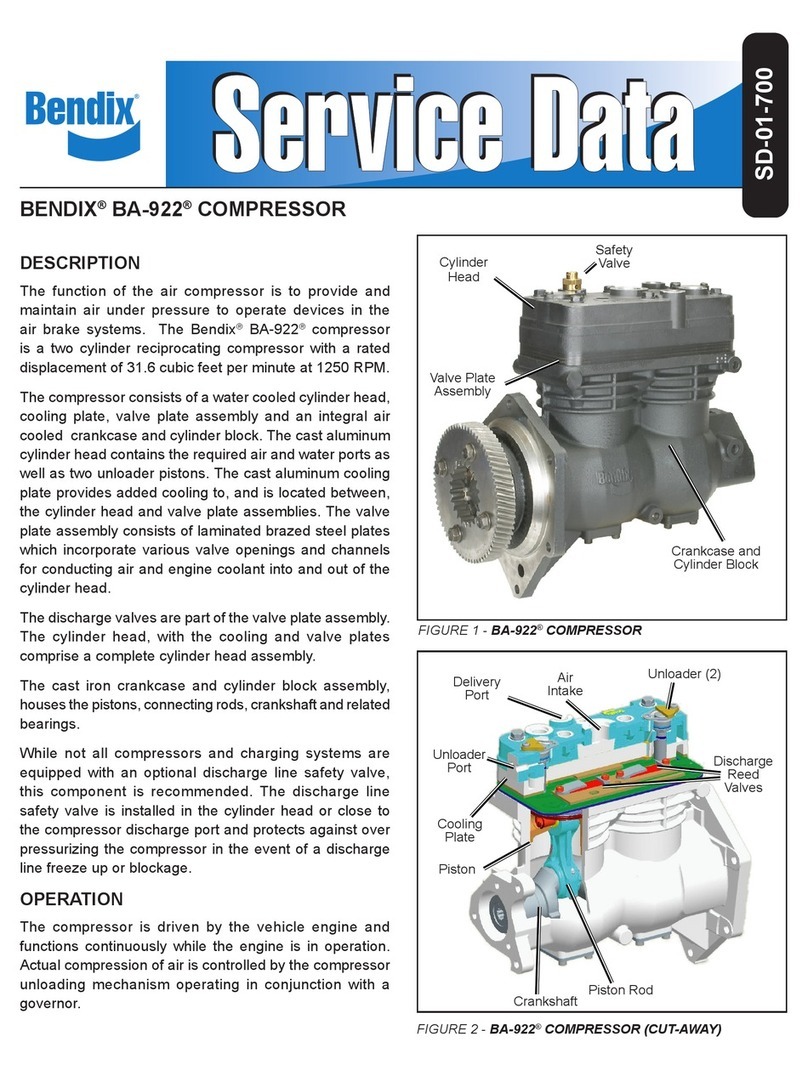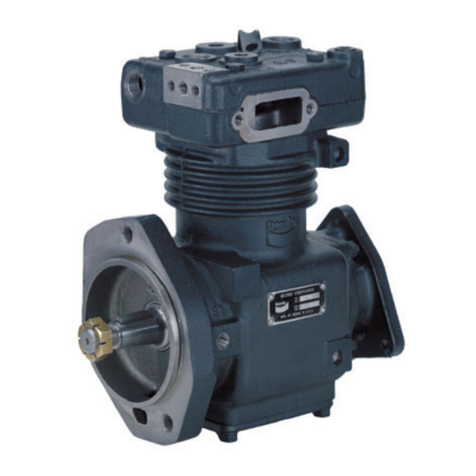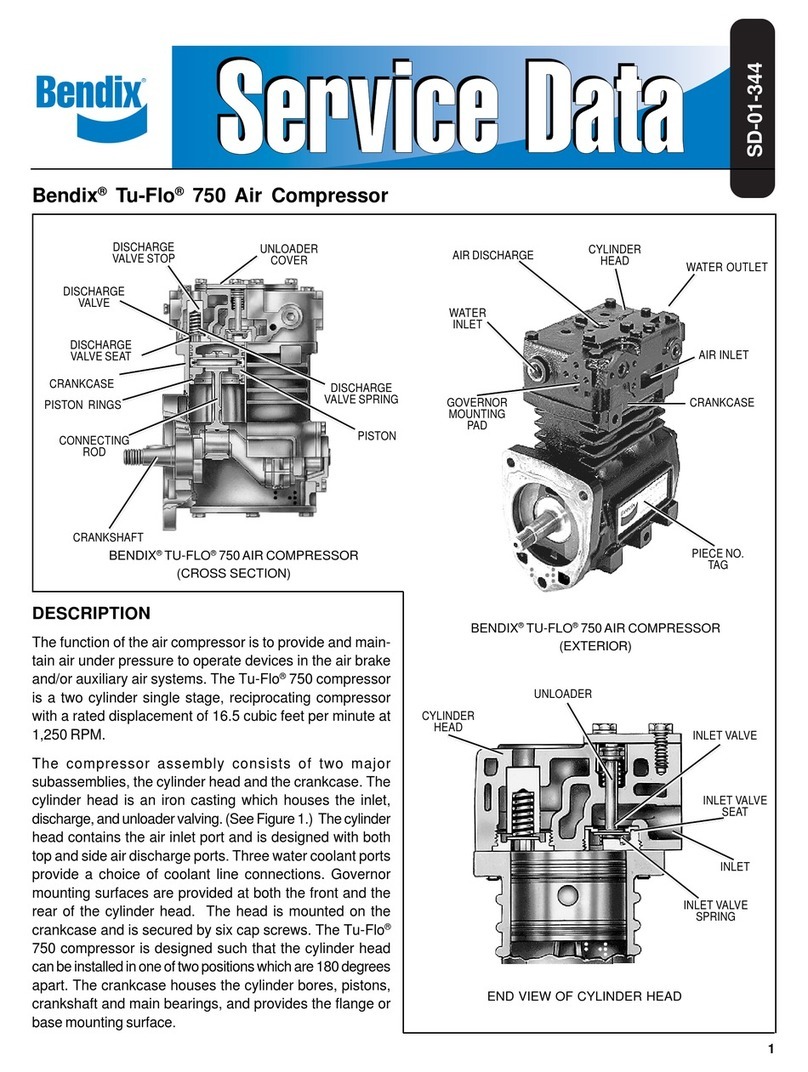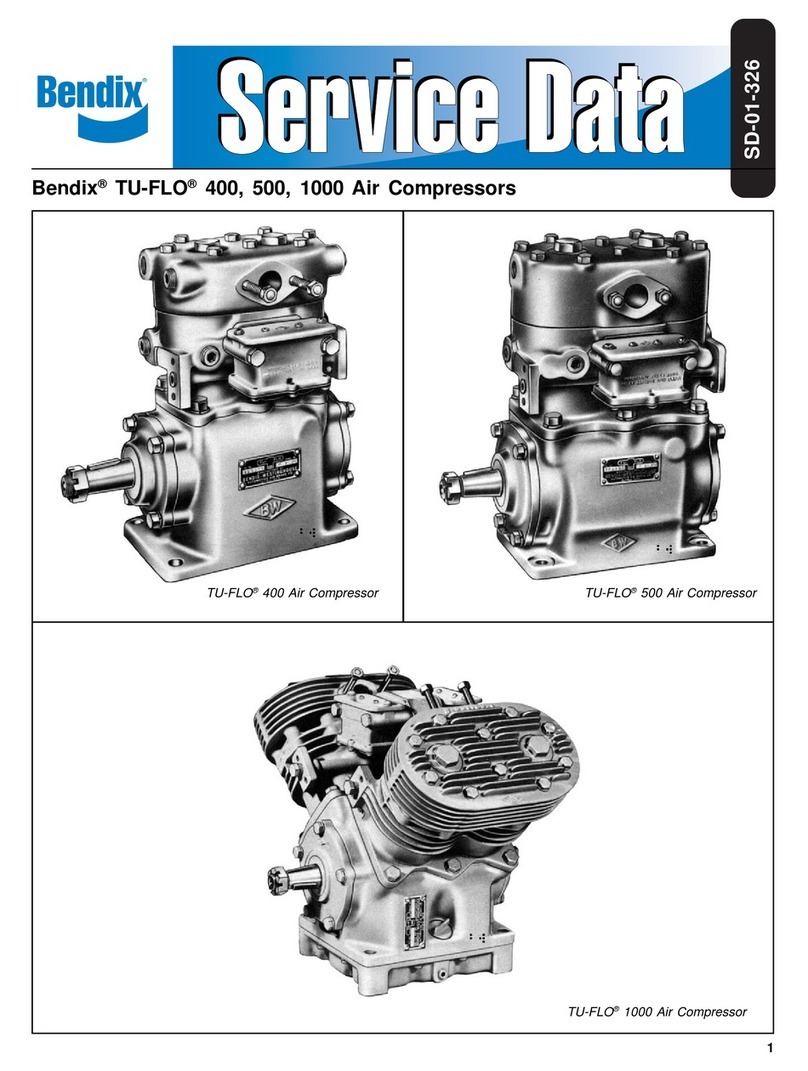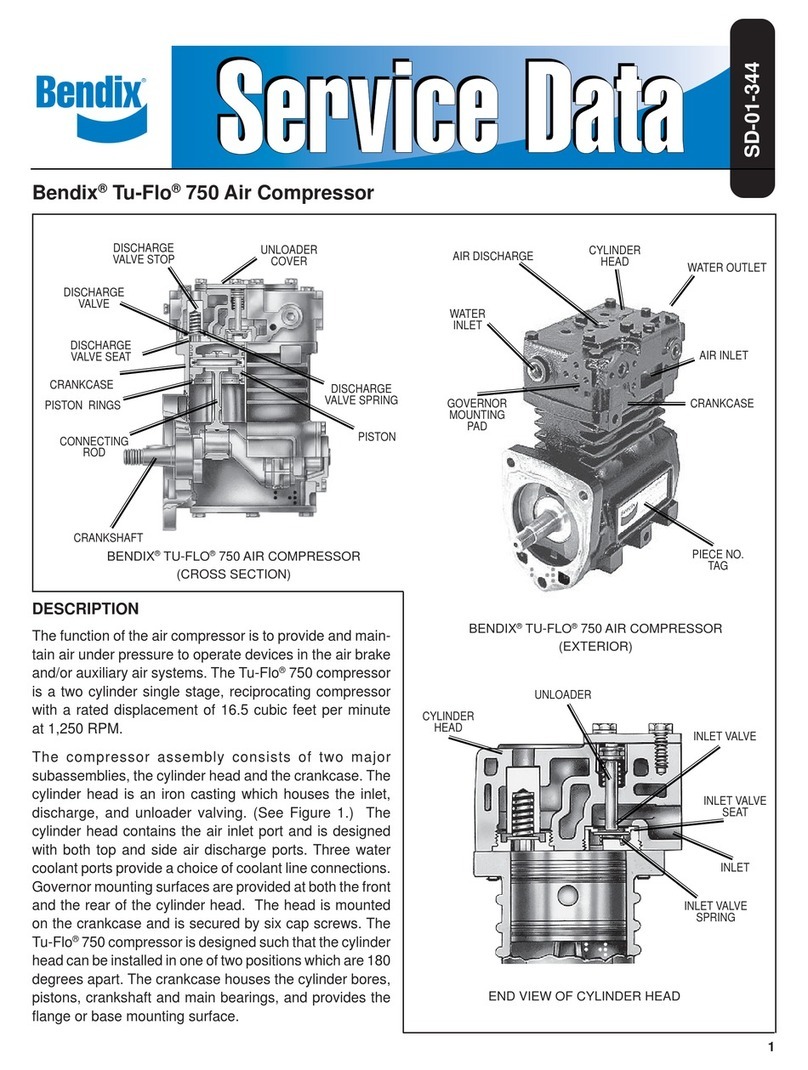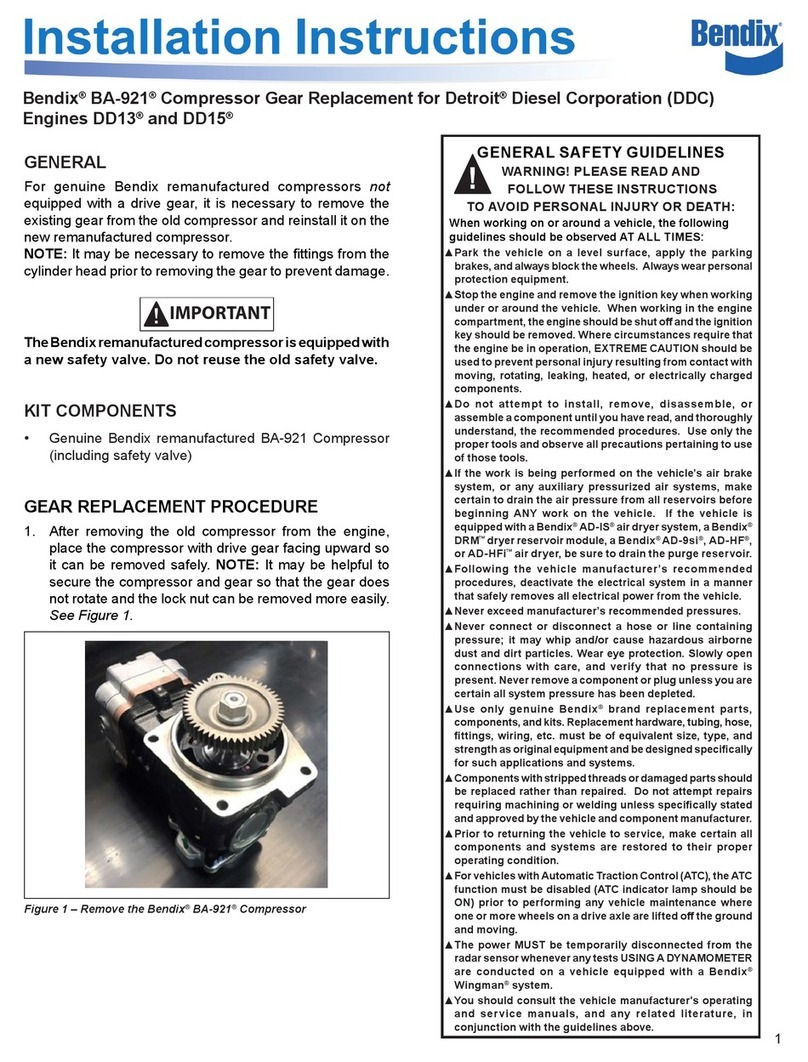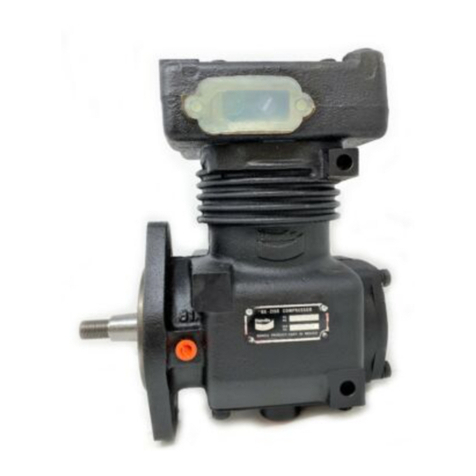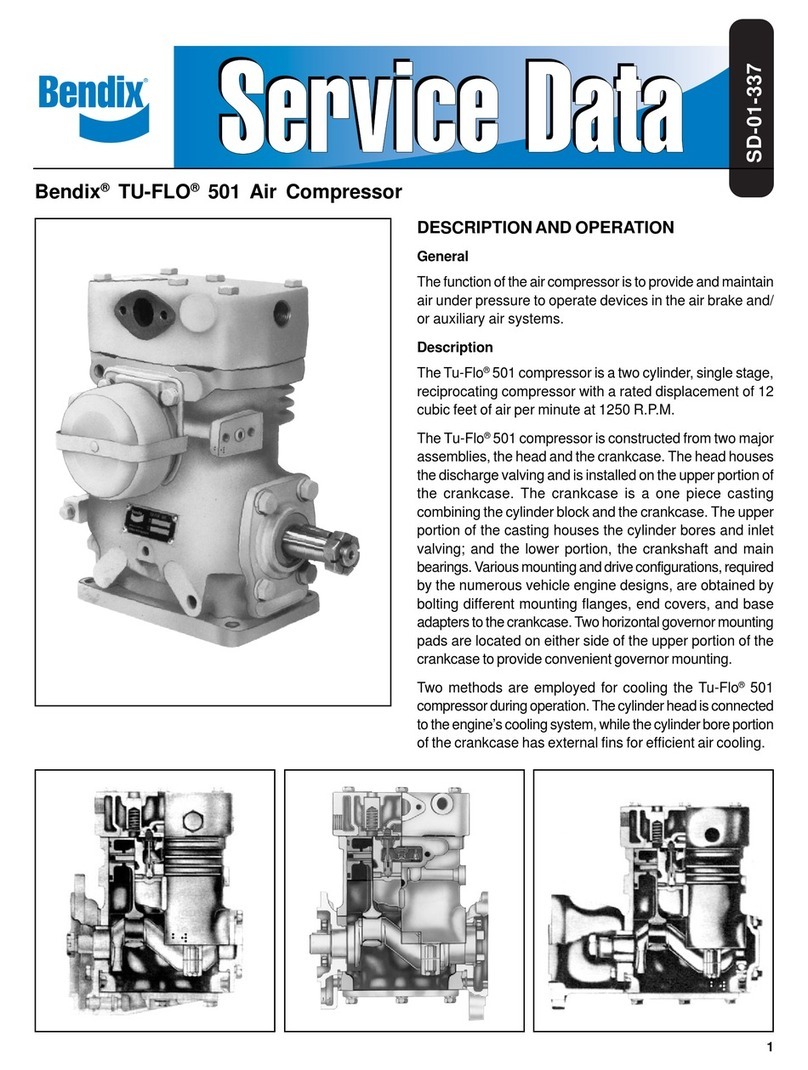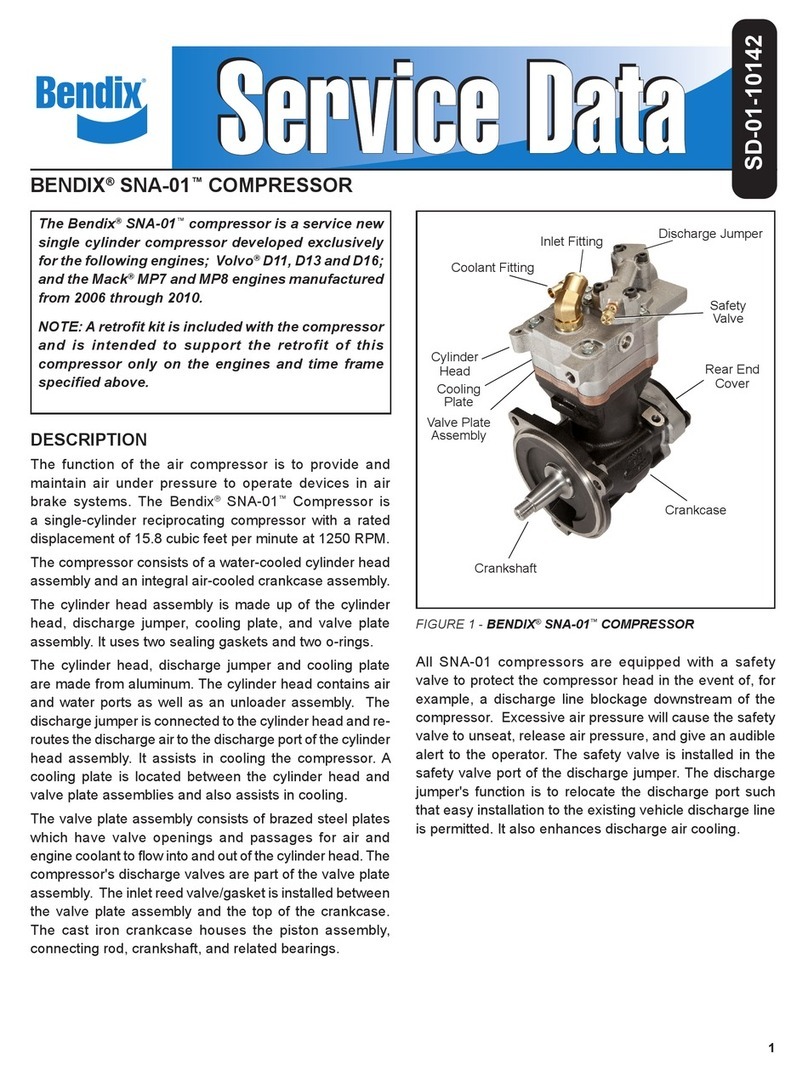
INTAKE ADAPTER
When the engine air cleaner is replaced: Some
compressors are fitted with compressor intake adapters,
which allow the compressor intake to be connected to the
engine air induction system. In this case, the compressor
receives a supply of clean air from the engine air cleaner.
When the engine air filter is changed, the compressor
intakeadapter should bechecked.If it isloose, remove the
intake adapter, clean the strainer plate, if applicable, and
replacetheintake adapter gasket, andreinstall the adapter
securely. Check line connections both at the compressor
intake adapter and at the engine. Inspect the connecting
line for ruptures and replace it if necessary.
COMPRESSOR COOLING
Every 6 months, 1800 operating hours or after each
50,000 miles whichever occurs first, inspect the
compressor discharge port, inlet cavity and discharge line
for evidence of restrictions and carboning. If excessive
buildup is noted, thoroughly clean or replace the affected
parts and closely inspect the compressor cooling system.
Checkallcompressorcoolantlinesforkinks and restrictions
toflow.Minimum coolant line sizeis3/8"I.D.Checkcoolant
lines for internal clogging from rust scale. If coolant lines
appear suspicious, check the coolant flow and compare
to the tabulated technical data present in the back of this
manual. Carefully inspect the air induction system for
restrictions.
LUBRICATION
Every six months,1800 operating hoursor 50,000 miles
whichever occurs first, check external oil supply and
return lines, if applicable, for kinks, bends, or restrictions
to flow. Supply lines must be a minimum of 3/16" I.D. and
return lines must be a minimum of 1/2" I.D. Oil return lines
should slope as sharply as possible back to the engine
crankcase and should have as few fittings and bends as
possible. Refer to the tabulated technical data in the back
of this manual for oil pressure minimum values.
Check the exterior of the compressor for the presence of
oilseepageand refer totheTROUBLESHOOTING section
for appropriate tests and corrective action.
OIL PASSING
All reciprocating compressors currently manufactured will
pass a minimal amount of oil. Air dryers will remove the
majorityofoilpriortoentranceintotheairbrakesystem.For
particularly oil sensitive systems the Bendix®PuraGuard®
QC™oil coalescing filter can be used in conjunction with
a Bendix air dryer.
If compressor oil passing is suspected, refer to the
TROUBLESHOOTING section and TABLE A for the
symptoms and corrective action to be taken. In addition,
Bendix has developed the "Bendix Air System Inspection
Cup" or BASIC test to help substantiate suspected
excessiveoilpassing.Thestepsto be followedwhenusing
the BASIC test are presented in APPENDIX A at the end
of the TROUBLESHOOTING section.
COMPRESSOR DRIVE
Every six months, 1800 operating hours or 50,000
miles,whicheveroccursfirst, checkfornoisycompressor
operation,which could indicate aworn drive gearcoupling,
a loose pulley or excessive internal wear. Adjust and/or
replace as necessary.
If the compressor is belt driven, check for proper belt and
pulley alignment and belt tension. Check all compressor
mounting bolts and retighten evenly if necessary. Check
for leakage and proper unloader mechanism operation.
Repair or replace parts as necessary.
Every 24 months, 7200 operating hours, or after
each 200,000 miles, perform a thorough inspection, and
dependingupontheresultsofthisinspectionorexperience,
disassemble the compressor, clean and inspect all parts
thoroughly, replace all worn or damaged parts using only
genuine Bendix replacements or replace the compressor
with a genuine Bendix remanufactured unit.
GENERAL SERVICE CHECKS
OPERATING TESTS
IN SERVICE OPERATING TESTS
Compressor Performance: Build-up Test
This test is performed with the vehicle parked and the
engine operating at maximum recommended governed
speed. Fully charge the air system to governor cut out (air
dryer purges). Pump the service brake pedal to lower the
system air pressure below 80 psi using the dash gauges.
As the air pressure builds back up, measure the time
from when the dash gauge passes 85 psi to the time it
passes 100 psi. The time should not exceed 40 seconds.
If the vehicle exceeds 40 seconds, test for (and fix) any
air leaks, and then re- test the compressor performance.
If the vehicle does not pass the test the second time,
use the Advanced Troubleshooting Guide for Air Brake
Compressors, starting on page A-1 of this document to
assist your investigation of the cause(s).
Note: All new vehicles are certified using the FMVSS
121 test (paragraph S5.1.1) by the vehicle manufacturer,
however the above test is a useful guide for in-service
vehicles.
Optional Comparative Performance Check
It may be useful to also conduct the above test with the
enginerunning athigh idle(instead ofmaximum governed
